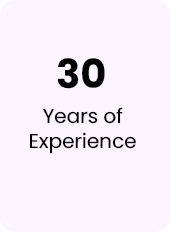Best Montessori School in
Jubilee Hills
Best Montessori School in
Jubilee Hills
A learning space for families to co-create personalised educational journeys for their children
What if, based on ability, a 6-year-old child could learn grade 2 English, grade 3 Math, and grade 5 art?
Know howWhat if children gained back time, to engage in learning about things, or developing skills that they are excited about, and continue to meet high academic standards?
Know howWhat if children had the ability to fix machines instead of learning the definition of a machine from a textbook?
Know howWhat if families could travel anytime and anywhere without any learning interruption to their children?
Know howWhat if I could help my child use technology productively ?
Know howLet's Talk
HOW DOES MONTESSORI WORK
The Montessori philosophy believes that every child is born with a creative mind and a drive to learn. These qualities can be best developed in a free environment. A constructive and proactive methodology, Montessori gives your child the freedom to develop varied interests and the competence needed to get her ready for life.
- EDUCATION THROUGH SENSES
- INDIVIDUAL RHYTHM
- MIXED AGE GROUPS
- CUSTOM DESIGNED EQUIPMENT
- FREEDOM
- ADD ONE MORE POINT

Whenever a young child picks up an object, he would bang it on the floor, try to taste it or bend it. This is his way of understanding the textures, girth and use of the object in hand. Montessori promotes this natural inquisitiveness and self learning capabilities of a child. When he uses his hands, and senses he can better understand various concepts like physical properties and usage.

All children have their own individual pace to work and binding them in a time table may not allow them the time to grasp a concept. In Montessori, the children are not bound by time to learn and hence work at it until they have mastered the concept.

An integral part of Montessori education is based on learning in a community environment. By exposing children between three and to six years of age to the same environment, older children learn to be more responsible while younger children will have role models to emulate. This will help them learn to work together, co-operate and co-exist like they have to when they go out into the world.

Montessori uses materials that are exclusively designed for the children working in their environment. These are scientifically designed to not just fit into tiny hands but also help in development of their sensory skills like sand paper letters and engraved numbers where they touch, trace and learn.

Montessori learning gives a child the freedom to choose any activity he wishes to pursue in a day. He can pick and choose the work of the day, repeat an activity any number of times, move around the environment to communicate and interact with other children to observe any activity he may find interesting. The freedom is provided along with guidelines which allow the children to develop discipline and respect toward
 Montessori uses materials that are exclusively designed for the children working in their environment. These are scientifically designed to not just fit into tiny hands but also help in development of their sensory skills like sand paper letters and engraved numbers where they touch, trace and learn.
Montessori uses materials that are exclusively designed for the children working in their environment. These are scientifically designed to not just fit into tiny hands but also help in development of their sensory skills like sand paper letters and engraved numbers where they touch, trace and learn. Learning Zones

Learning Paradigm
In addition to meeting appropriate academic standards mapped to the highest learning outcomes of National and International assessment boards our curriculum focuses on exploring self-discovery through:


Dreamtime Learning Input Output

Our Founder

Lina Ashar
Author and TEDx speaker
Lina is passionate about children, learning, peace, happiness, self-mastery, creating a world of abundance, and questioning the status quo. She knows it is the right time to re-disrupt learning, education, and schools






Awards
Awarded Leading Women Entrepreneur recognition at several for between 2010 and 2014 including Times of India and iGlobal.

Lifetime Education Leadership Award by EduWorld in 2014.

Key Speaker at the symposium of Indian Career Education and Development Council (ICEDC) 2014 at the American School of Bombay.

The leading woman in education at the Women Leaders in India Awards by iGlobal in 2015.

Received The Economic Times Inspiring Business Leaders in India 2016 award.

National Education Excellence Award in 2017

‘People Who Inspire India’ - Education Iconic Award 2021

Frequently asked questions
ABOUT MONTESSORI
IS IT ALL SELF LEARNING OR DO YOU TEACH
Montessori teachers act as guides to a child’s independence. The teacher gives each child a presentation of a concept using specifically designed equipment. The child is then free to explore the material and learn through self-correction. The teacher’s observation of the child helps to plan for future lessons.
Montessori teachers act as guides to a child’s independence. The teacher gives each child a presentation of a concept using specifically designed equipment. The child is then free to explore the material and learn through self-correction. The teacher’s observation of the child helps to plan for future lessons.
ALL WORK AND NO PLAY
IS IT TRUE THAT MONTESSORI IS ALL PLAY AND NO WORK?
Maria Montessori believed that play is the work of the child. Through curiosity, the child is able to explore their environment and work with desired materials at their own pace.
Maria Montessori believed that play is the work of the child. Through curiosity, the child is able to explore their environment and work with desired materials at their own pace.
MATERIAL BASED LEARNING
WILL THE CHILDREN ONLY LEARN ON MATERIAL?
The Montessori curriculum is designed to move the child from concrete to abstract where every concept is given in the form of material for the child to explore through all senses- touch, sound, sight and others. This forms the basis for seamless transition to abstraction where the child can do complex work on paper.
The Montessori curriculum is designed to move the child from concrete to abstract where every concept is given in the form of material for the child to explore through all senses- touch, sound, sight and others. This forms the basis for seamless transition to abstraction where the child can do complex work on paper.






